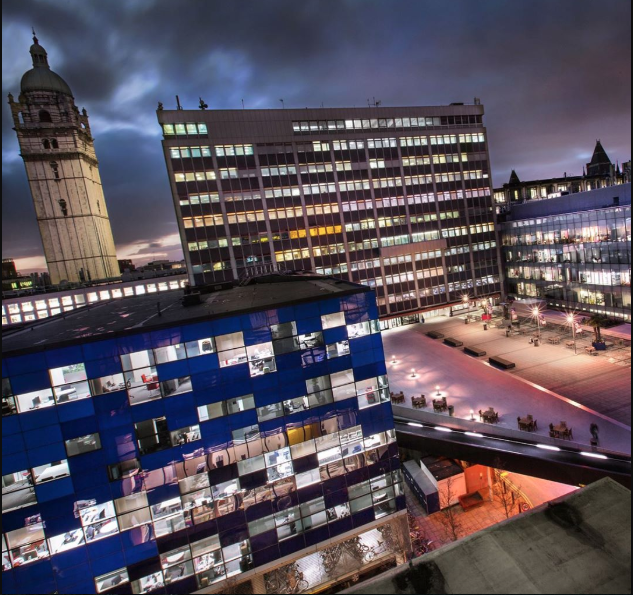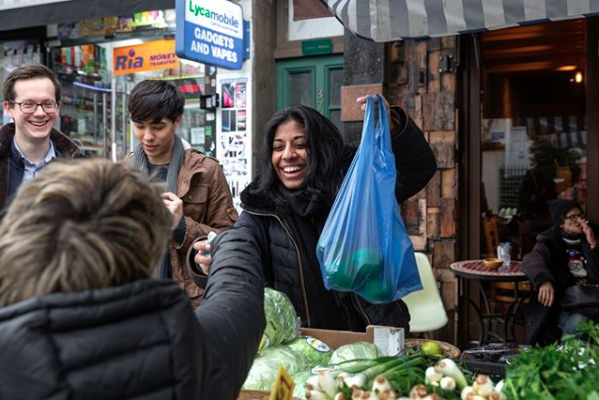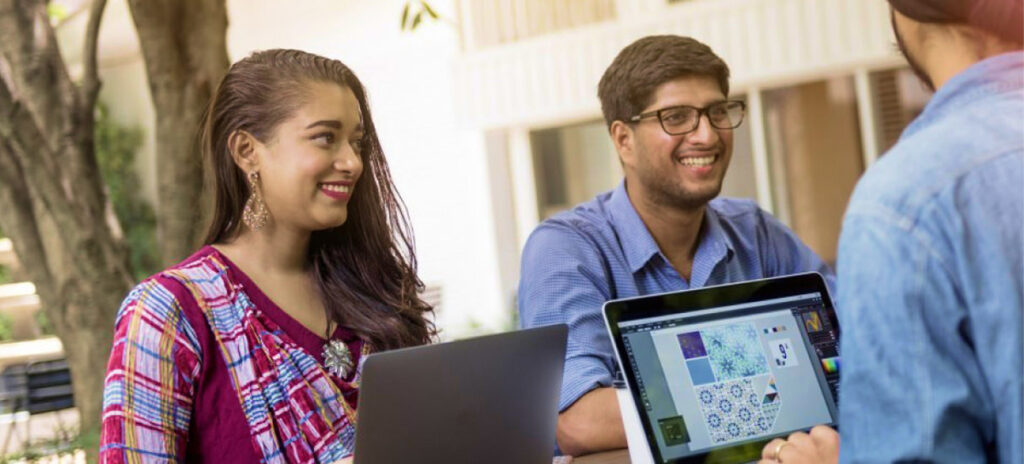It’s decision season for students starting college this year. Normally, campuses would be teeming with flocks of high school seniors and parents following peppy student tour guides. I was one of those guides, a sophomore learning to walk backwards without tripping and swapping my left for my right, as I pointed out interesting features of buildings and fun facts about Virginia Tech.
In our work with colleges and universities I can’t tell you how many times we’ve heard admissions staff say: “If we can just get them on campus, they’ll enroll.” Obviously that can’t be 100% true, since most students visit multiple campuses, and we’ve talked to many who pointed out how the campus visit led them to decide not to attend a certain school. But there’s no denying the campus visit is an important part of the decision process, as the E-Expectations report shows every year. Students want to get a feel for the place. Will I fit in? Are there people like me? Is there a lot to do? Is it pretty? Often it’s the unscripted moments and personal interactions that resonate and cause a student to say “Yes, this feels right.”
But now, there’s a global pandemic. Campuses are closed, college road trips aren’t happening. What do we do without a campus visit?
Admissions teams are understandably concerned it will affect yield. In a survey released by EAB on March 16th, 75% of admissions officers anticipated a significant impact on yield. On March 19th, another survey from Quatromoney and TuitionFit indicated 26% of inbound freshmen are rethinking their college choice because of the Coronavirus pandemic. Job losses will have an immediate impact on families’ ability to pay for college, forcing some students to postpone or choose a more affordable alternative.
While the pandemic will certainly impact schools everywhere (some regional, lower-cost schools may even see an increase), we don’t have to give up on the power of the campus visit. The reality is that people have visited campuses virtually for decades. Some are low-income families who can’t afford to fly to a distant school even though their son or daughter was accepted. The largest group are international students who mostly make their choice without traveling. In the US in 2019, international students made up 5.5% of the total student population. They’re 11% of the student body at my alma mater, Virginia Tech. What can we learn from their experience? How do they visit when they can’t visit?
 Photo Credit: Imperial College London Instagram
Photo Credit: Imperial College London Instagram
We did our first major research study with international students in 2007 for Imperial College London. At the time, international students made up about ⅓ of the student body. Today that number is 59%. We interviewed students in Cyprus, India, Singapore, Sri Lanka, and Switzerland about their decision-making process and the digital journeys they took to visit various universities.
These quotes from students in South Asia exemplify what we heard:
Prospective student from India:
“You see, because I’m not in the UK, I can’t take a walk around Imperial & appreciate the architecture or meet the professors or take the inside scoop from any of the students there. It’s a different case with me, I’m on a different continent. So, I can’t connect with people face to face. And even interacting through the phone is kind of impractical. So the internet is the only medium I can gather more information apart from, say, the British Council Library. So the website is the only source of information for me in that regard.”
Prospective student from Sri Lanka:
“If the people are very nice, and they reply to you, and they attend to you about questions when you ask them… I think that is really great. Because some universities, when you ask for something, they don’t even reply to you when you ask them stuff. So basically as long as the facilities are there, and the courses (note: majors in the UK are called courses) are in place, and the people are friendly, that is what I am looking for.
One of my cousins also went. She lives in England, and she said ‘it is a really good place and, since it is not too far from the City and stuff, there is a kind of night life.’ So basically, it is more modern and that kind of thing… comparing it to Cambridge and things like that.”
Our research for Imperial College London led us to address these key goals for international students:
- Build up an image of the university – a real sense of the place.
- Does the campus seem modern, historic, beautiful, run-down, up-to-date?
- Does reality match the reputation?
- Are the people friendly?
- Are there people there like me? Will I feel welcome?
- What are the faculty like? What are their interests? How are their relationships with students?
- Is there a vibrant student life?
- What activities and clubs are available?
- What are typical student events?
- Photos/video of students taking part in activities
- What are facilities like (classrooms, labs, sports, music, etc.)?
- What will my living situation be like (photos of residence halls, dining, etc.)?
- What’s the surrounding area like? Nightlife? Outdoors?
How do you answer these questions if you can’t visit? Students weren’t just going to the university website. They searched Google, photo sites, social media, Youtube, etc. They listened to family and friends.
As we planned the new Imperial website, we realized we didn’t need to build new technology or an interactive tour for these students. We just needed more genuine content that showcased Imperial, and created a sense of human connection, atmosphere and personality. Social media platforms already existed to share this content (but content was often buried), and we could creatively surface it in key parts of the website where people go to answer their questions.
Fast-forward to when the site had been live for over a year. I was back on campus for a follow-up project for Imperial. A south Asian student stopped me and asked for directions. I asked if he was new to Imperial – he said it was his first day. I asked what part of India he was from (Gujarat), and what his experience was like deciding to go abroad for university.
He described how he evaluated Imperial, all the things he looked at on the website, and how it gave him a great sense of what it would be like for him – ultimately giving him confidence that he was making the right choice. He had no idea I’d had a hand in shaping that experience and I didn’t tell him, but I was glowing inside. This is why I do what I do!
People still seek authentic voices and views
Since our work with Imperial, we’ve conducted interviews and usability tests with hundreds of prospective students. There are nuances with each school but, aside from academic programs, students are consistently looking for the same things we saw with Imperial. We see students and parents visiting campuses virtually by looking for authentic voices and views of the university. Often they find them on Instagram and other social platforms. It’s still about great content and human connection.
 Photo Credit: Imperial College London Instagram
Photo Credit: Imperial College London Instagram
According to EAB’s survey, many admissions teams are responding to the current situation by adding or promoting more online experiences and events:
- 54% are promoting their virtual tour.
- 26% are adding a virtual tour.
- 62% are adding video conferences.
- 46% are adding live events on social media.
- 43% are scheduling a larger number of live events on social media.
These all make good sense. We might emphasize some of these tactics over others. Here’s our advice based on the research we’ve done over the past 15 years in higher ed.
NewCity’s recommendations – what you can do today to boost your digital impact
- Ask yourself – what content supports those questions we outlined for Imperial? If it’s missing or hard to find, address it.
- Run a comparative usability study between your website and your top competitors, and see what cues students pick up on to answer those questions.
- Create opportunities for direct interaction between prospective students and current students and faculty: Zoom video conferences, live chats, live social media events featuring current students talking about campus life, etc.
- Prioritize great photography and videos that show both campus and people rather than virtual tours. We’re not saying don’t do them, but if you’re choosing between a virtual tour and more quality photography and video, do the latter (although you can’t easily shoot a new video right now). Virtual tours are cool, but they can be cumbersome and don’t allow for those serendipitous human moments you get with a real campus visit.
- Given that this may not be the last time students have to attend class online, consider showing how your online class experience works.
- Create microsites targeting admitted students that bring together all of the above.
You don’t have to redesign your website to boost your digital visit impact. You probably already have most of the content and tools you need. It’s easier than ever to have quality video conference experiences with students. Let’s seize the opportunity to let digital do what it does best.
And as always, if we can help with any of the above – let us know!

